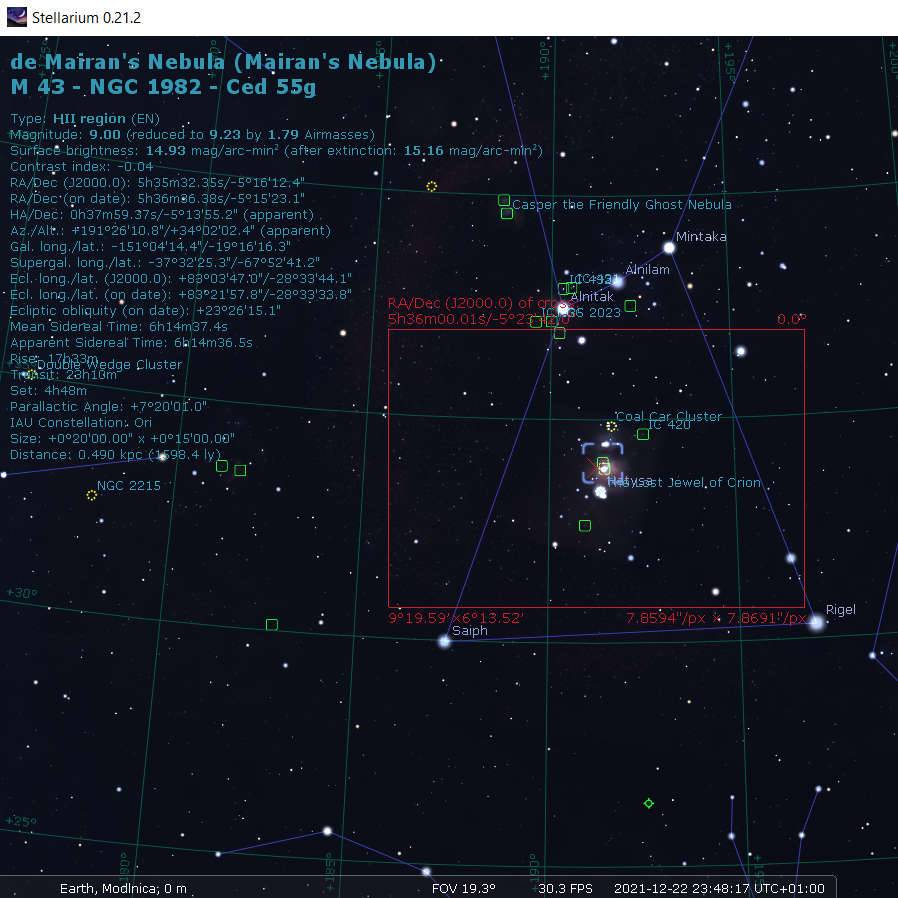
Simple and Consistent
As I’ve stepped into astrophotography as a hobby, I’ve had a chance to kick the tires on a number of different astrophotography software tools. My goal as always has been to keep things at this stage in my journey on the cheap. That’s not to say the learning curves have been easy but after half a year I’ve settled into a pretty consistent go-to routine from planning through imaging and ultimately to processing.
I’ve detailed my tool list on my Astrophoto Tools page but I thought I’d expand on a few points briefly today.
Planning
When thinking about what I want to image, I almost always start with Stellarium. It usually comes down to how I want to shoot (ie. tracked vs untracked) and that then dictates what lens I want to use. Once I know what lens I’ll be using, that allows me to search for what targets are most worth chasing. I’m still new enough to the hobby that I can continue to have fun with Cygnus, Andromeda, and Orion. But I am starting to experiment a bit with some more challenging subjects. Stellarium helps me plan my time effectively and gives me an idea of how I want to frame my photo. I’m also learning a tremendous amount about the heavens in the process.
Once I know what I want to image, I need to figure out when I can image. This is when I turn to Clear Outside which forecasts the sky conditions in my area. It helps to know days in advance when I’m going to have the best opportunity to get outside. Is it always right? No. But it’s accurate enough to let me know when I’ll have the best shot at a successful night of shooting. It’s also updated constantly which is great for watching for weather trends that are developing.
Imaging
I’m falling in love with Astro Photography Tool (APT). I’m still plumbing the depths of this feature-rich program and I don’t have a setup that can take advantage of all it has to offer. But even using it solely to control my DSLR camera makes it worth it. It’s provided as a trial version that doesn’t expire which is awesome to really get a feel for the software. I’m about a paycheck or two away from going ahead and purchasing the full version. I don’t think I really need it at this point, I just really appreciate how it’s provided and the value I’m getting during my imaging sessions.
Stacking and Processing
I’ve gone through several different methods of stacking and processing my astrophotos with various astrophotography software tools. For a while, I was exclusively using Siril, then switched to only using Deep Sky Stacker, and lately, I’ve been using both (DSS for stacking, Siril for initial image processing). In my opinion, Siril would be a fine stand-alone, but it’s hard on my hardware. Stacking in DSS is more timely and space-efficient. So using DSS for the stacking and then Siril for the initial image processing just seems to work great for me.
To finish my photos, I typically use GIMP for some basic levels and curves adjustments. Eventually, I’ll learn to do more in GIMP, but my time right now is better spent on continuing to get better at imaging. Besides, Siril’s image processing tools leave little to improve upon for quality photos. And I’m certain that there will be some folks who would ask about Photoshop and the other Adobe offerings. Fair point, but at this stage of my journey, I’m not sure I’d be getting value for money by going that route. Maybe in time, but we’ll just have to wait and see.
Astrophotography Software Tools – Wrap Up
That’s all I wanted to share today. I’m certain that my list will continue to grow and I’ll keep it updated as I expand my toolset. I’d of course be interested to hear from you about what you think I might be missing. Tell me in the comments below.
